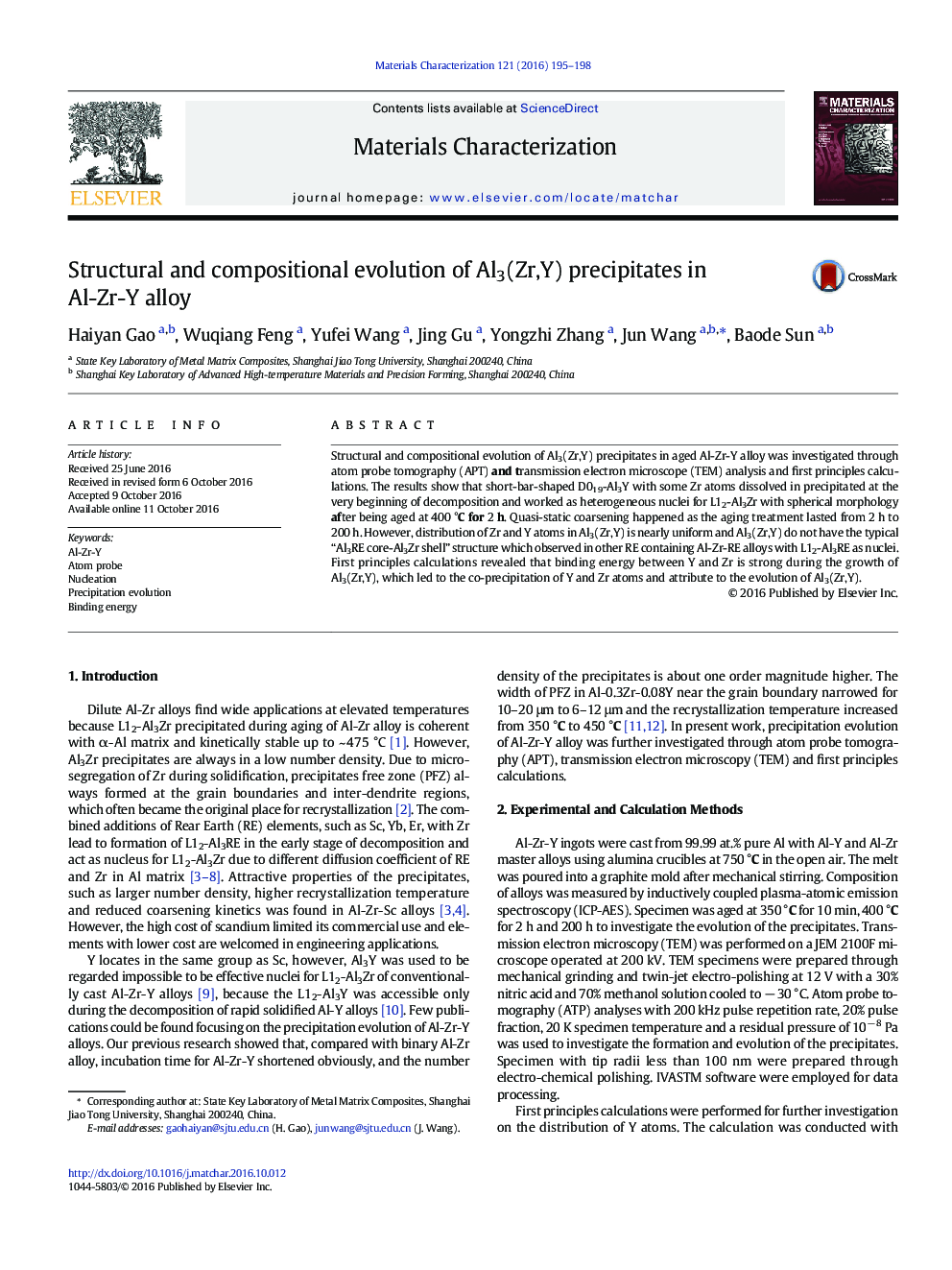| Article ID | Journal | Published Year | Pages | File Type |
|---|---|---|---|---|
| 5455021 | Materials Characterization | 2016 | 4 Pages |
Abstract
Structural and compositional evolution of Al3(Zr,Y) precipitates in aged Al-Zr-Y alloy was investigated through atom probe tomography (APT) and transmission electron microscope (TEM) analysis and first principles calculations. The results show that short-bar-shaped D019-Al3Y with some Zr atoms dissolved in precipitated at the very beginning of decomposition and worked as heterogeneous nuclei for L12-Al3Zr with spherical morphology after being aged at 400 °C for 2 h. Quasi-static coarsening happened as the aging treatment lasted from 2 h to 200 h. However, distribution of Zr and Y atoms in Al3(Zr,Y) is nearly uniform and Al3(Zr,Y) do not have the typical “Al3RE core-Al3Zr shell” structure which observed in other RE containing Al-Zr-RE alloys with L12-Al3RE as nuclei. First principles calculations revealed that binding energy between Y and Zr is strong during the growth of Al3(Zr,Y), which led to the co-precipitation of Y and Zr atoms and attribute to the evolution of Al3(Zr,Y).
Keywords
Related Topics
Physical Sciences and Engineering
Materials Science
Materials Science (General)
Authors
Haiyan Gao, Wuqiang Feng, Yufei Wang, Jing Gu, Yongzhi Zhang, Jun Wang, Baode Sun,
